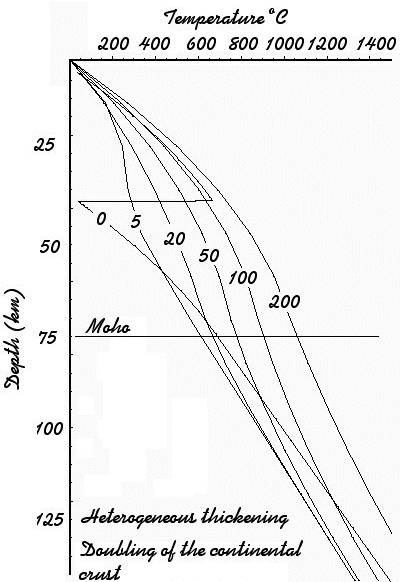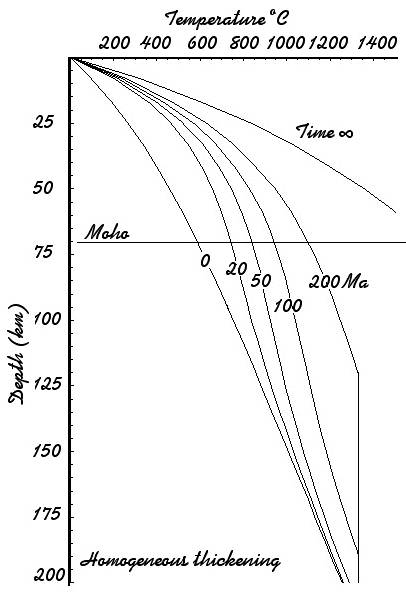| The geotherm in the continental lithosphere |
|||||||||
| Crustal thickening and thinning, via tectonics, modify the geotherm in two different ways. First, during deformation, heat is advected mainly upward (in the case of thinning) and mainly downward (in the case of thickening) as rocks carry their temperature with them during fast thinning or fast thickening. During thinning the geotherm increases as warmer temperatures are reached at lesser depths (the slope of the geotherm increases). During thickening the geotherm decreases as cooler conditions are met deeper in the crust (the slope of the geotherm decreases). Second, as the thickness of the crust changes, the steady state geotherm is affected. This is because a thicker crust will produce more radiogenic heat, therefore crustal thickening leads to warmer geotherm whereas crustal thinning leads to cooler geotherm. | |||||||||
 |
 |
||||||||
| Lithospheric thickening
Thickening produces heat advection as a volume of rock, and the heat attached to it, is displaced vertically resulting in a rapid cooling of the geotherm. Thickening also increases the thickness of the radiogenic layer therefore increasing the production of radiogenic heat in the lithosphere. Isostasy (cf. section of Isostasy and Gravitational Forces) produces uplift of the lithosphere leading to erosion which in turn affects the amount and distribution of the radiogenic heat elements in the crust which also impacts on the geotherm. The interplay between the mode of the thickening (heterogeneous via thrusting vs homogeneous), the thickening rate and the erosion rate leads to contrasted thermal histories. |
|||||||||